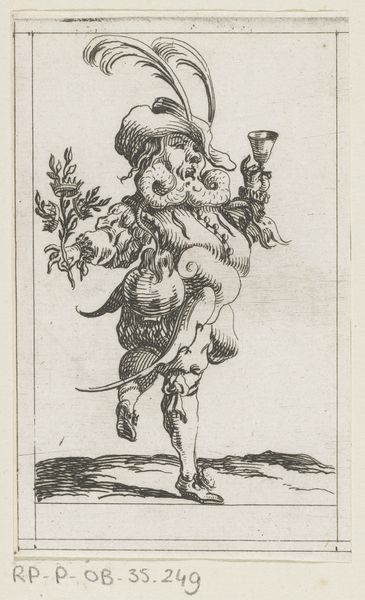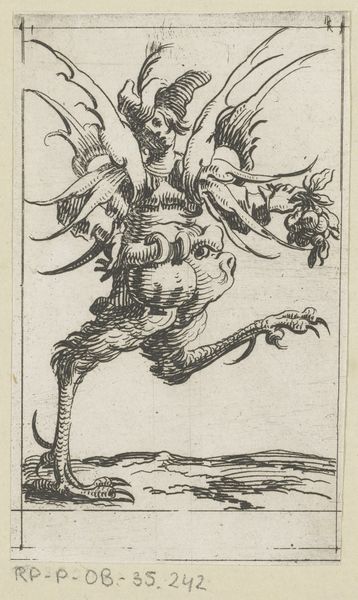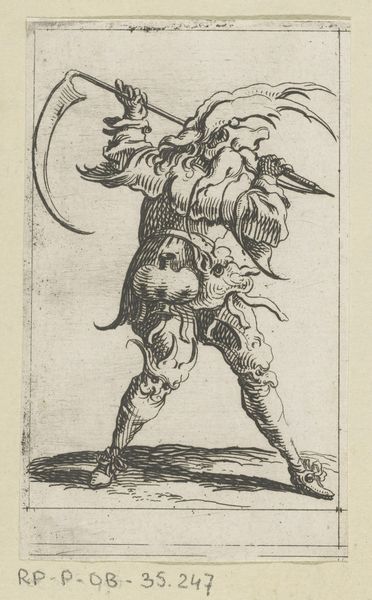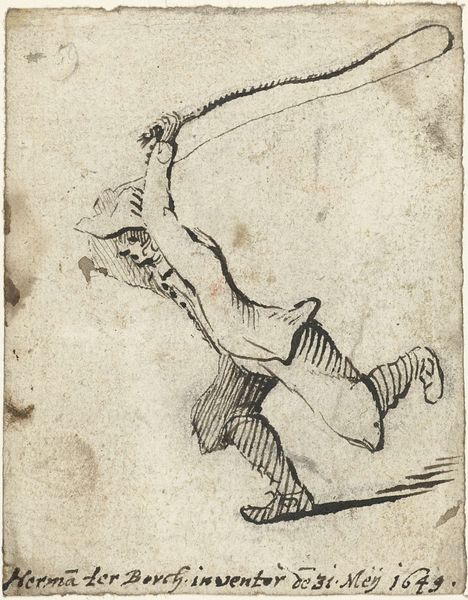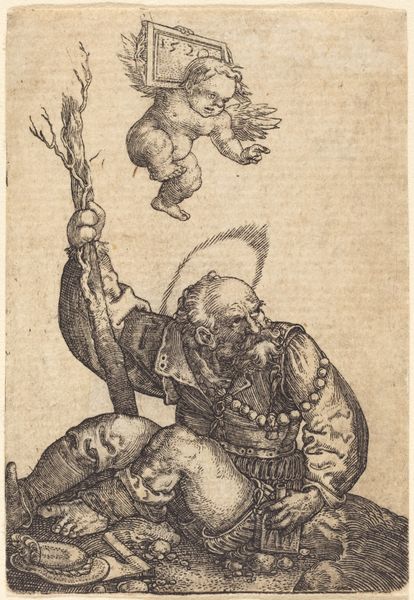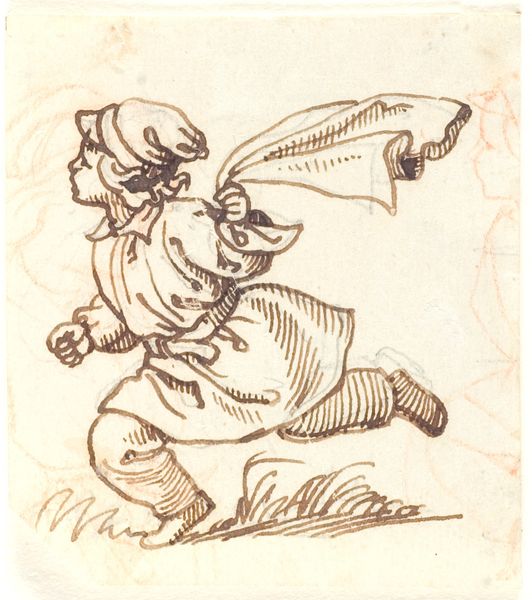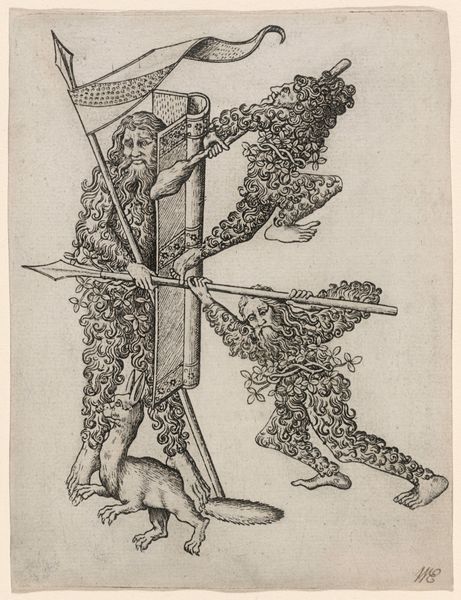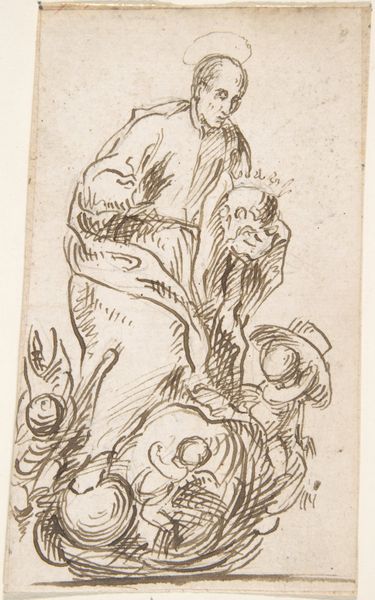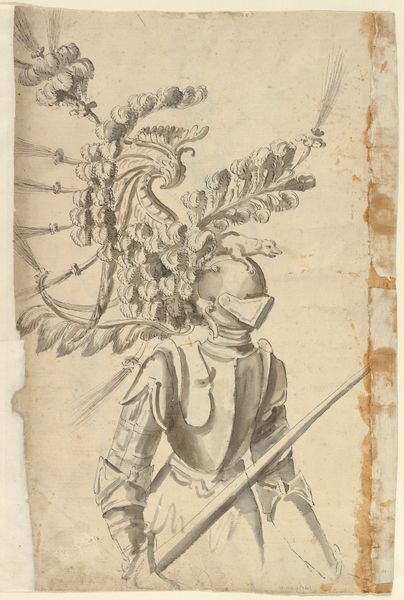
drawing, ink, pen
#
portrait
#
drawing
#
ink drawing
#
pen sketch
#
figuration
#
ink
#
pen
Dimensions: 52 mm (height) x 40 mm (width) (bladmaal)
Curator: Let’s turn our attention to this drawing by Lorenz Frølich, created around 1855. It's an ink sketch, titled "Boy Hanging on a Branch in a Tree.” Editor: Immediately, I'm struck by the figure’s expression. He seems caught between exuberance and perhaps a little bit of fear. There's a rawness, an immediacy to the sketch itself. Curator: Indeed, Frølich often engaged with themes of childhood, especially in relation to folklore and national identity. This image encapsulates a moment of youthful transgression. In its time, it echoes Romantic notions of innocence juxtaposed with an emerging sense of freedom, which ties to a broader movement emphasizing personal experience in a period of national reconstruction following Denmark's turbulent experience during the Napoleonic wars and a changing role of childhood in the bourgeois family. Editor: I notice how the tree is almost a character in itself, winding and gnarled. The boy clinging to it almost seems to mimic the twisting form. There’s a definite sense of vulnerability and precariousness in the act of hanging. Curator: Precisely. The drawing can be examined within a framework of performative masculinity in nineteenth-century Denmark. Physical activity, expressed here by youthful energy, contributed to a narrative of a developing national strength. Furthermore, in a patriarchal society, boys were encouraged to develop strong physiques, a trait expressed by clinging to the tree branch. Editor: The ink lines have this wonderfully urgent quality; they build the drama. We're getting a glimpse of childhood and how culture produces ideas of what masculinity can mean through body politics. I would not consider it naive nor apolitical. Curator: Agreed, that reading enhances the complexities embedded in such an ostensibly simple drawing. Frølich gives us this raw, unfiltered look at identity construction through interaction with nature. Editor: It's a potent reminder of how images can be seemingly lighthearted but hold far-reaching stories of social expectations. Curator: Absolutely, considering how it speaks to wider cultural narratives and continuing symbolism.
Comments
No comments
Be the first to comment and join the conversation on the ultimate creative platform.
